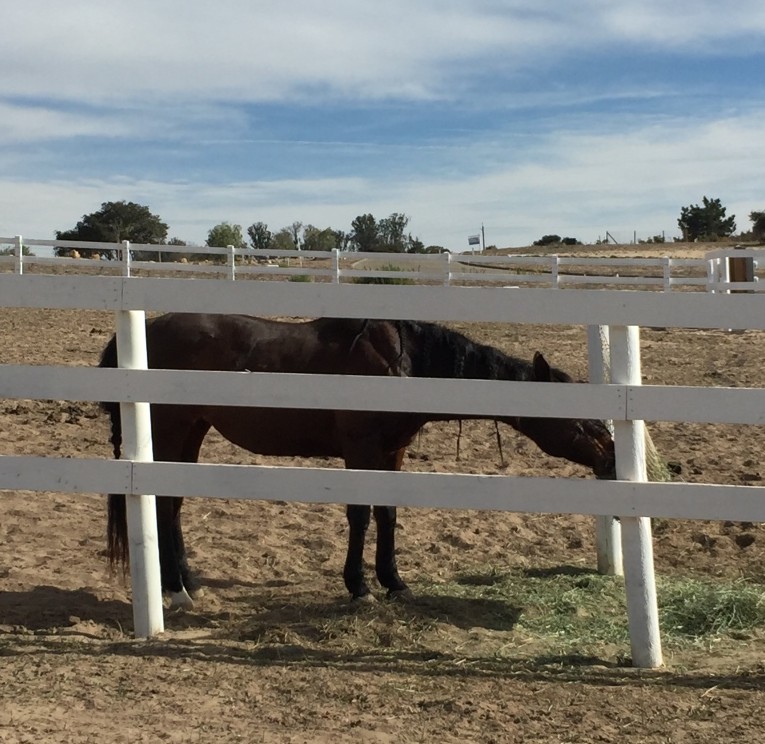Is your horse going gray? 80% of gray horses over the age of 15 will develop equine melanoma lesions, according to the melanoma research team at UC Davis. This is a staggering statistic. Although this prediction is pretty straight forward, there are many myths swirling around the topic of equine melanoma.
Equine melanoma shows up as lesions or small raised bumps on horses. These lesions can become cancerous tumors and may grow aggressively or slowly. The melanoma lesions are commonly found in the hairless areas under the tail, around the anus, in sheaths and along the lips and eye lids.
Come ride along with me! Get your riding the SLO County Trails Hotsheet to get started and join the SLO Horse News Herd!
Going Gray : Equine Melanoma Myths Busted
Myth #1 Only Older, Gray Horses Develop Melanoma
False. Although melanoma most commonly starts showing up in gray horses in their teens, younger gray horses can develop melanoma so it’s not just an older, gray horse disease. Early-onset equine melanoma can show up in equines under the age of 8 and can generally be more aggressive.
Myth #2 Sun Exposure Causes or Accelerates Equine Melanoma
No. Sun exposure does not cause or increase the development of equine melanoma tumors. Research has shown that a graying haircoat gene is associated with a genetic predisposition to malignant melanoma in equines. This gene causes a horse or pony’s coat to go from black/steel gray/chestnut/bay to white or dappled gray. Gene research has determined that this gene (STX17) is over-expressed in equine melanoma cases.
Myth #3 Equine Melanoma Does Not Appear in the Hair Covered Parts of the Body
False. Melanoma tumors can pop up anywhere on the horse or pony’s body. Most commonly the tumors will appear in the hairless areas, but not always.
Myth #4 Black Skinned Equines Don’t Get Melanoma
False. The gene responsible for triggering melanoma occurrence is horses is the graying haircoat gene. This means that horses born dark (black, bay, chestnut or steel gray) who lighten to gray or white carry the graying haircoat gene. This gene is over-expressed in equines with melanoma tumors.
Myth #6 White Skinned Equines Are a Higher Risk for Melanoma
No. The gene responsible for triggering melanoma in horses is the graying haircoat gene. White skinned horses (either in patches, or face and leg markings, or the whole body) are born white. White skinned hair coat color is not associated with the graying haircoat gene.
However, white skinned horses are susceptible to sunburn, especially the areas of the muzzle or around the eye where there is sparce hair cover.
Myth #7 There is An Effective Vaccine for Equine Melanoma
The key here is effective. A vaccine is available. The horse version was developed from the dog melanoma vaccine. However, it has questionable efficacy. It has been approved by the USDA for dogs but not for horses. USDA approval means it won’t hurt the horse. Be aware, it is not approved by the FDA. FDA approval means it is effective. For more info regarding the two government bodies involved in approving vaccines for animals see this article: USDA and FDA
Myth #8 Most Melanoma Tumors are Benign
No. Actually 60 -70% of equine melanoma tumors will become malignant. For this reason, it is best to have equine melanoma tumors removed early.
Myth #9 Equine Melanoma Tumors Are All Visible on the Affected Horse
False. Equine melanoma tumors can occur in the equine’s throat, eyes, intestines and also block defecation and urination. Melanoma tumors found around the eye can migrate into the eye resulting in laser treatment for removal of the tumor or removal of the affected eye.

Information Sources:
On going research at the UC Davis School of Veterinary Medicine, led by Dr. Carrie Finno and outgoing director Dr. Alain Theon is currently being run on genetic samples from Connemara ponies. The focus of the research is to isolate the gene (discover gene markers) connected to the development of melanoma in gray horses of all breeds. The Connemara Pony breed was chosen for its high population of gray ponies within a smaller sample-size breed. This makes gathering samples easier as it involves working with owners willing to submit samples.
Gene research has discovered there are extra copies of the gene STX17 in Connemara ponies with melanoma. This is the graying haircoat color gene that is over expressed in equine melanoma cases. The graying hair coat color gene duplicates in the equines exhibiting melanoma.
Information for this article came from a presentation to the American Connemara Pony Society on September 30, 2023 by the UC Davis Equine Melanoma Research team: Dr. Carrie Finno and Dr. Alain Theon. The American Connemara Pony Society has worked with its members to get samples and has generated much interest in helping solve this puzzle for all breeds. In addition, members of the ACPS have contributed time and resources to support the research team.
This article has been provided for information only. Please consult with your veterinarian regarding treatment and detection of equine melanoma in your horse, pony or donkey.
Equine Melanoma Research Samples Wanted
If you have a gray Connemara pony with melanoma lesions or a Connemara past the age of 15 who does not exhibit melanoma tumors, samples of the tumor (if present) and a blood sample are needed for the on-going research. Early on-set melanoma in Connemara ponies samples are much needed.
Both photos: Sharon Jantzen and Rosewood Whisper a Connemara Pony – Tre Awain Cavan O’Conor x Rosewood Twilight
Photo credit: Essence Captured

Get going! Looking for trails to ride in SLO County? This hotsheet will get you going on a few of the top rides. Get this delivered to your e-mail and join the SLO Horse News herd to stay up-to-date on herd happenings. Click here > SLO County Trails Hot Sheet to get going!




